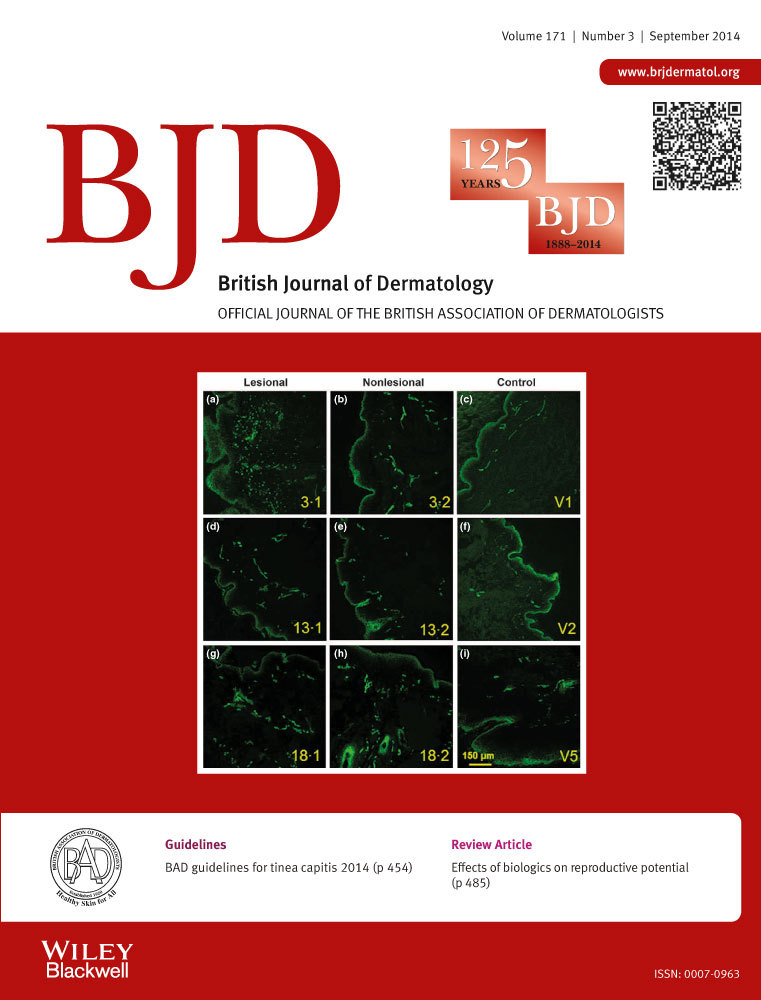Evaluating ex vivo fluorescence confocal microscopy images of basal cell carcinomas in Mohs excised tissue
Summary
Background
Fluorescence confocal microscopy (FCM) is an emerging technology for rapid imaging of excised tissue, without the need for frozen- or fixed-section processing. Basal cell carcinomas (BCCs) can be detected in Mohs excisions although few studies have described the major BCC findings as seen on FCM.
Objectives
To describe the major BCC findings of excised tissue during Mohs surgery and to correlate them with histopathology.
Methods
Freshly excised tumours and frozen-thawed discarded tissue of BCC during Mohs surgery were analysed by means of FCM. A side-by-side correlation between FCM images and histological sections was performed. The FCM features of overlying skin and adnexal structures were also described.
Results
Sixty-four BCC cases were analysed. Distinct BCC types appeared unique in terms of shape and size of tumour islands [bigger in nodular (18/25), smaller and rounded in micronodular (7/7) and tiny cords for infiltrative ones (24/30)] and for the presence of clefting, palisading and increased nucleus/cytoplasm ratio. An excellent correlation was found between FCM and histological findings (Cohen's κ statistics = 0·9). In six cases, the presence of sebaceous glands and intense stroma reaction represented possible confounders.
Conclusions
Fluorescence confocal microscopy is a fast and new imaging technique that allows an excellent visualization of skin structures and BCC findings during Mohs surgery.




